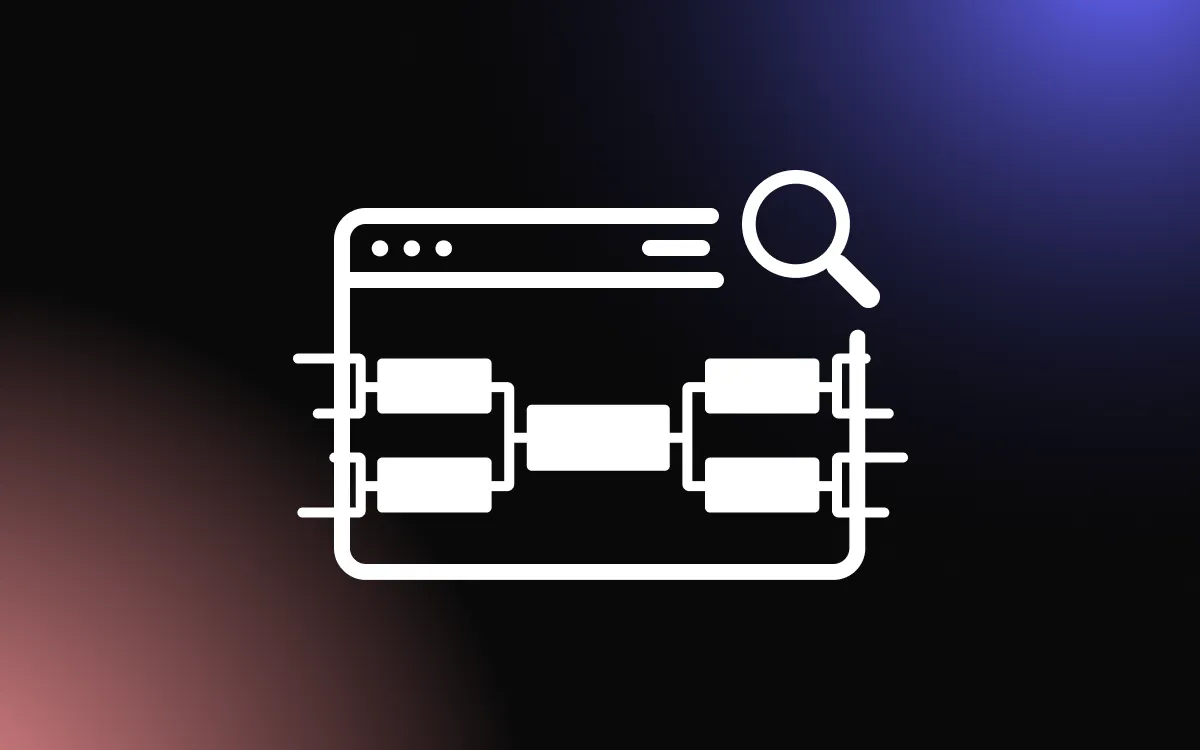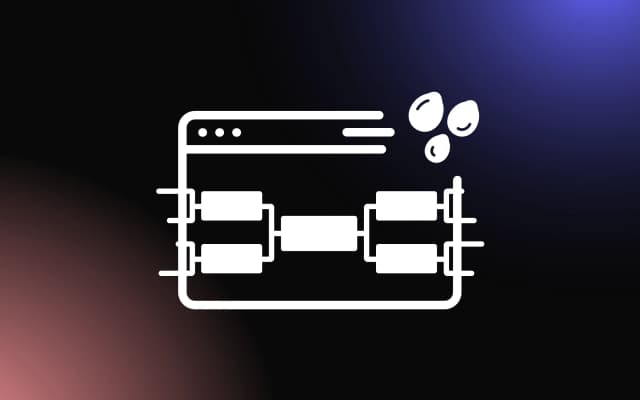
Brackets have long been a staple for visualizing competitions, from sports tournaments to voting challenges. However, in an age where visual appeal is paramount, simply listing names or titles in a bracket may not suffice.
Incorporating images into your bracket design can elevate its appeal, making it more engaging and visually compelling for your audience. Whether you're showcasing teams, products, movies, or any other contenders, a well-designed bracket with images can capture attention and enhance user experience.
This article will guide you through the nuances of creating a visually stunning bracket, enriched with impactful imagery.
Understanding the Basics

What is Single Elimination?
Single elimination, often referred to as a knockout or sudden death format, is a tournament structure where participants are paired against each other in individual matches. The winner of each match advances to the next round, while the loser is immediately eliminated from the tournament.
This process continues until only one participant remains, ultimately crowned the champion. The primary advantage of this format is its simplicity and swiftness, as the number of rounds is determined by the number of participants.
What is Double Elimination?
Double elimination is a more forgiving tournament structure compared to its single elimination counterpart. In this format, participants are not eliminated after their first loss. Instead, they move to a "losers' bracket" where they have another chance to compete. If a participant loses in the losers' bracket, they are then eliminated from the tournament.
This system continues until two participants remain: one from the winners' bracket and one from the losers' bracket. They face off in the championship, where the participant from the losers' bracket must win twice to claim the title, while the participant from the winners' bracket only needs one victory.
Key Differences at a Glance
The most evident difference between single and double elimination is the opportunity for redemption in the latter. While a single loss results in immediate elimination in a single elimination format, participants in a double elimination tournament have the chance to bounce back from an initial defeat. This often leads to longer tournaments in the double elimination format, as more matches are required to determine a winner.
Additionally, double elimination can provide a more comprehensive view of participants' skills and abilities, as they have more opportunities to showcase their prowess against various opponents.
Advantages of Single Elimination
Simplicity and Ease of Organization
One of the primary benefits of the single elimination format is its straightforwardness. With a clear-cut structure, organizers can easily set up and manage the tournament. Each round halves the number of participants, making it simple to predict the progression and outcome.
There's no need for complex calculations, tracking multiple brackets, or managing a losers' pool. This simplicity not only reduces the administrative burden but also makes the tournament more accessible and understandable for participants and spectators alike.
Shorter Tournament Duration
Single elimination tournaments are inherently more concise than their double elimination or round-robin counterparts.
With each participant having only one life, the number of total matches is significantly reduced. This shorter duration is especially advantageous for events with time constraints or when multiple tournaments need to be held in quick succession. It allows for a rapid determination of a winner without the need for extended play periods.
High Stakes and Excitement
The do-or-die nature of single elimination brings an added layer of tension and drama to every match. Since every game could be a participant's last, there's an inherent urgency and intensity to each play. This high-stakes environment can lead to thrilling upsets, unexpected outcomes, and memorable moments that captivate both players and audiences.
The unpredictability of the format ensures that every match matters, making for a more engaging viewer experience.
Advantages of Double Elimination
Second Chances for Participants
One of the standout features of the double elimination format is the opportunity it provides for redemption. Unlike single elimination, where one loss results in immediate ousting, participants in double elimination have the safety net of a "losers' bracket."
This means that even if a team or individual suffers an early setback, they still have a chance to fight their way back into contention. This added layer of hope can boost morale, encourage perseverance, and lead to thrilling comeback stories.
More Accurate Representation of Skill
Double elimination offers a more comprehensive assessment of participants' abilities. In single elimination, a strong contender might face another powerhouse early on, leading to an early exit for one of them. However, with double elimination, such early exits are less definitive.
A team or individual can lose a match, yet still prove their mettle by advancing through the losers' bracket, ensuring that a single bad game or unfortunate matchup doesn't overshadow their overall prowess.
Increased Number of Matches and Engagement
With the inclusion of a losers' bracket, double elimination naturally results in more matches compared to its single elimination counterpart. This increase in content is beneficial for organizers, participants, and spectators.
For event organizers and broadcasters, it means more content to showcase. For participants, it translates to more playtime and experience. And for spectators, it provides extended entertainment, keeping them engaged for longer durations.
Considerations for Choosing the Right Format
Number of Participants
One of the primary factors influencing the choice of tournament format is the number of participants. For smaller groups, a round-robin might be ideal as it ensures everyone plays against everyone else, providing a comprehensive competition experience.
However, as the number of participants grows, round-robin can become time-consuming and logistically challenging. Single elimination is often favored for large-scale tournaments due to its straightforward progression, but it might not be ideal if you want to give participants a second chance.
Double elimination, while more complex, can accommodate larger groups while still offering participants a safety net after a loss.
Tournament Duration and Schedule
The available time for the tournament plays a significant role in determining the format. If you're working with a tight schedule, single elimination can swiftly produce a winner.
However, if there's more flexibility in the timeline, double elimination or round-robin might be more suitable, allowing for a more in-depth exploration of participants' skills and capabilities. It's essential to balance the desire for comprehensive competition with the practicalities of time constraints.
Audience Engagement and Spectator Experience
The choice of format can significantly impact the spectator experience. Single elimination, with its high-stakes, do-or-die matches, can be incredibly thrilling, drawing audiences into the drama of each game.
Double elimination, with its potential for comeback stories from the losers' bracket, offers a different kind of suspense and excitement. Round-robin, while exhaustive, might lack the same level of tension but can be ideal for dedicated fans who appreciate a thorough competition.
When choosing a format, consider what kind of narrative and experience you want to offer your audience. Do you want the unpredictability and tension of single elimination, the redemption arcs of double elimination, or the comprehensive competition of round-robin?
Potential Drawbacks and Challenges
Complexity of Double Elimination Brackets
While double elimination tournaments offer participants a second chance after a loss, they also introduce a level of complexity that can be challenging for both organizers and spectators to navigate.
With two separate brackets — the winners' and the losers' — tracking the progression of teams or individuals becomes more intricate. This complexity can sometimes lead to confusion, especially for those unfamiliar with the format.
Organizers need to ensure clear communication and perhaps even provide visual aids or explanations to help participants and spectators understand the flow of the tournament.
Potential for Longer Tournament Duration in Double Elimination
One of the inherent challenges of the double elimination format is the potential for a prolonged tournament duration. Since participants have the opportunity to compete again after a loss, the number of matches increases compared to a single elimination format.
This extended duration can lead to logistical challenges, such as securing venues for additional days or managing fatigue among participants. Organizers need to be prepared for the extended timeline and ensure that all logistical aspects, from scheduling to resource allocation, are adequately addressed.
Risk of Early Upsets in Single Elimination
Single elimination tournaments, while straightforward, come with the inherent risk of early upsets. A top-seeded team or individual might have an off day and be eliminated in the initial rounds, leading to potential disappointments for spectators and stakeholders.
This format, with its do-or-die nature, doesn't always ensure that the best teams make it to the final stages. While upsets can add to the excitement and unpredictability of the tournament, they can also lead to debates about the fairness and representativeness of the competition.
Tips for Organizing a Successful Tournament
Clear Communication of Rules and Format
One of the foundational elements of a successful tournament is clear and concise communication. Organizers should ensure that all participants are well-informed about the tournament's rules, format, and any other essential details.
This includes providing written guidelines, hosting pre-tournament briefings, and being available to answer any queries. A well-informed participant is less likely to inadvertently break a rule or feel blindsided by an unexpected aspect of the competition.
Ensuring Fairness and Transparency
Fair play is the cornerstone of any competitive event. Organizers must take steps to ensure that the tournament is conducted in a fair and transparent manner.
This involves unbiased seeding, impartial referees or judges, and a clear system for addressing disputes or grievances. It's also crucial to maintain transparency in decision-making processes, ensuring that participants and spectators alike can trust the integrity of the event.
This trust fosters a positive environment and enhances the overall experience for everyone involved.
The Best Tool for Bracket Management

In the realm of bracket management, the Free Bracket Maker by Common Ninja emerges as a frontrunner. This state-of-the-art widget is not just about creating visually appealing brackets; it's about comprehensive management.
From single to double elimination, custom brackets, and even brackets with images, this tool caters to a wide range of tournament structures. Its user-friendly interface ensures that organizers can easily set up, modify, and monitor their brackets in real-time.
The added feature of embedding these brackets directly onto a website ensures that participants and viewers always have access to the latest updates. Moreover, with options to enable voting, predictions, and even prize allocations, it goes beyond traditional bracket tools.
Whether you're a tournament organizer, a website owner, or just someone passionate about competitive events, the Free Bracket Maker offers a holistic solution for all your bracket management needs.
Feedback from Participants and Spectators
Preferences in Different Sports and Games
Feedback from participants and spectators often varies depending on the sport or game in question. For instance, in team sports like football or basketball, fans might prioritize intense rivalries and historic matchups, while participants might focus on fairness and the structure of the competition.
In contrast, individual sports or games, such as tennis or chess, might see spectators emphasizing player storylines and underdog tales, while participants could be more concerned with seeding and the draw. Understanding these nuanced preferences is crucial for organizers to tailor the event to its specific audience.
The Role of Drama and Narrative in Tournament Appeal
One consistent piece of feedback across various sports and games is the allure of drama and narrative. Spectators love to follow compelling storylines, be it a rising star challenging an established champion, a historic team aiming for another title, or a past champion trying to reclaim their glory.
These narratives add depth to the competition, making each match or game more than just a contest of skill but a chapter in an unfolding story. Participants, too, often recognize and appreciate the role of these narratives, even as they focus on their performance.
Balancing Competitive Integrity with Entertainment
A challenge that often emerges from feedback is the balance between maintaining competitive integrity and ensuring entertainment. Spectators want thrilling matches, unexpected outcomes, and moments that become part of the sport's lore.
However, participants desire a fair playing field where the best competitor on the day wins. Striking this balance is delicate. Organizers must ensure that the format and rules prioritize fairness while also creating opportunities for memorable moments and exciting matchups.
Conclusion
Designing a bracket with images is an art that combines aesthetics with functionality. When done right, it not only serves its primary purpose of tracking competition progress but also becomes a visual treat that resonates with viewers. Remember, the key lies in choosing relevant, high-quality images and ensuring they complement the overall design without overwhelming it.
By paying attention to details, optimizing for various platforms, and keeping user experience in mind, you can craft a bracket that stands out and captivates your audience. As you embark on this design journey, let creativity be your guide and the principles outlined here be your roadmap to success.


